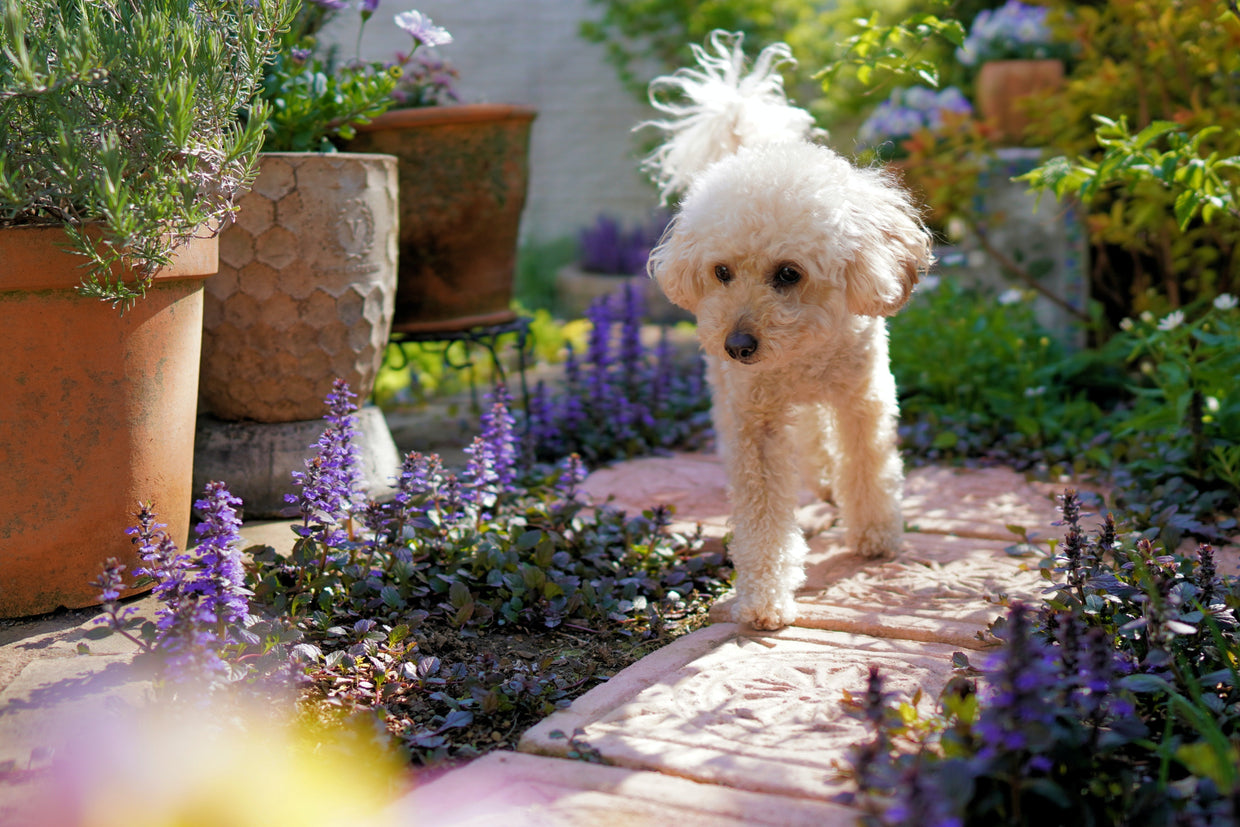

Plants and Flowers That Are Poisonous to Dogs
It’s safe to say that dogs are naturally curious creatures and when it comes to walking them, you can expect to make many stops along the way for them to sniff and explore their surroundings. But not everything they explore will be harmless. Whilst plants and flowers may be sweet-smelling, there some that could be harmful for your pet.

Whether you are getting out for your daily walk, or are spending extra time in the garden, spring-blooms are impossible to escape. In this guide we list some of the most common plants and flowers that are poisonous to dogs so that you know which ones to stay away from whilst you explore the outdoors.
Bluebells

The beautiful bluebell may be a great addition to your flower beds at home but this is one of the deadliest plants to have around if you are a pet-owner. Any part of the bluebell can be harmful for your dog and can even be deadly if eaten in large amounts. So it goes without saying that this is one to avoid at all costs. Side effects of your pooch nibbling on this springtime favourite include abdominal problems, diarrhoea and vomiting, and the function of the heart can also be affected.
Daffodils

Daffodils are one of the most popular and common spring-flowering bulbs. They bloom year after year, growing well in containers, borders and grass. Whilst these sunshine-yellow blooms look pretty in the home, they are poisonous to pups. If your pooch manages to eat one of the bulbs, this can cause them to feel really ill with symptoms including vomiting, convulsion and diarrhoea.
Deadly nightshade (belladonna)
Now, the name for this one is a bit of a giveaway. Deadly nightshade, also known as Atropa belladonna, is a poisonous plant for both dogs and humans. Eating this particular plant has a whole host of side effects from rashes to problems with balance and, in serious cases, can even lead to hallucinations and convulsions.
Hemlock
Hemlock is a highly poisonous plant of the parsley family, which is often found growing on riverbanks. Recognisable with its fern-like leaves, small white flowers and unpleasant smell, Hemlock not only causes vomiting when eaten but in severe cases, can paralyse the lungs.
Rhubarb

Despite being wonderfully tasty and flavoursome when used in a homemade crumble or pie, Rhubarb is a plant which poses harm to your dog. Whilst the stems are safe to eat, rhubarb leaves can be poisonous to dogs. Whilst it would take quite a few leaves to be consumed before resulting in sickness, eating too much rhubarb could cause the kidneys to shut down. Be mindful of this if you grow rhubarb in your garden and watch out for rhubarb patches on your morning walk.
Wisteria

This seasonal lilac bloom is one of the most common and most beautiful plants, which can be found in the garden, in the countryside and roaming in neighbouring fields. Whilst easy on the eye - and a winner for your instagram feed - Wisteria is incredibly toxic to dogs, cats and horses when eaten.
Yew

This common evergreen is extremely poisonous to all species, including dogs, cats, horses and humans! From the berries to the leaves, all parts of this plant are poisonous as they contain taxines.
If your dog was to digest any part of the yew, side effects could include dilated pupils, difficulty breathing, drooling, tremors, vomiting, weakness and life-threatening changes in heart rate or blood pressure. In extreme cases, this poisonous plant could result in a coma or death.
Like all toxic substances, the severity of the side effects will depend on how much of the plant your dog has digested. Some plants are more poisonous than others and so even a small amount could cause severe signs. If you suspect that your dog has eaten something poisonous, we suggest that you seek veterinary help as soon as possible.
Whilst this list is by no means exhaustive, these are some of the most common plants and flowers which could be poisonous to dogs and are best to avoid. Looking for more tips on how to care for your dog during springtime? Check out our latest blog on Dogs with Hayfever.



